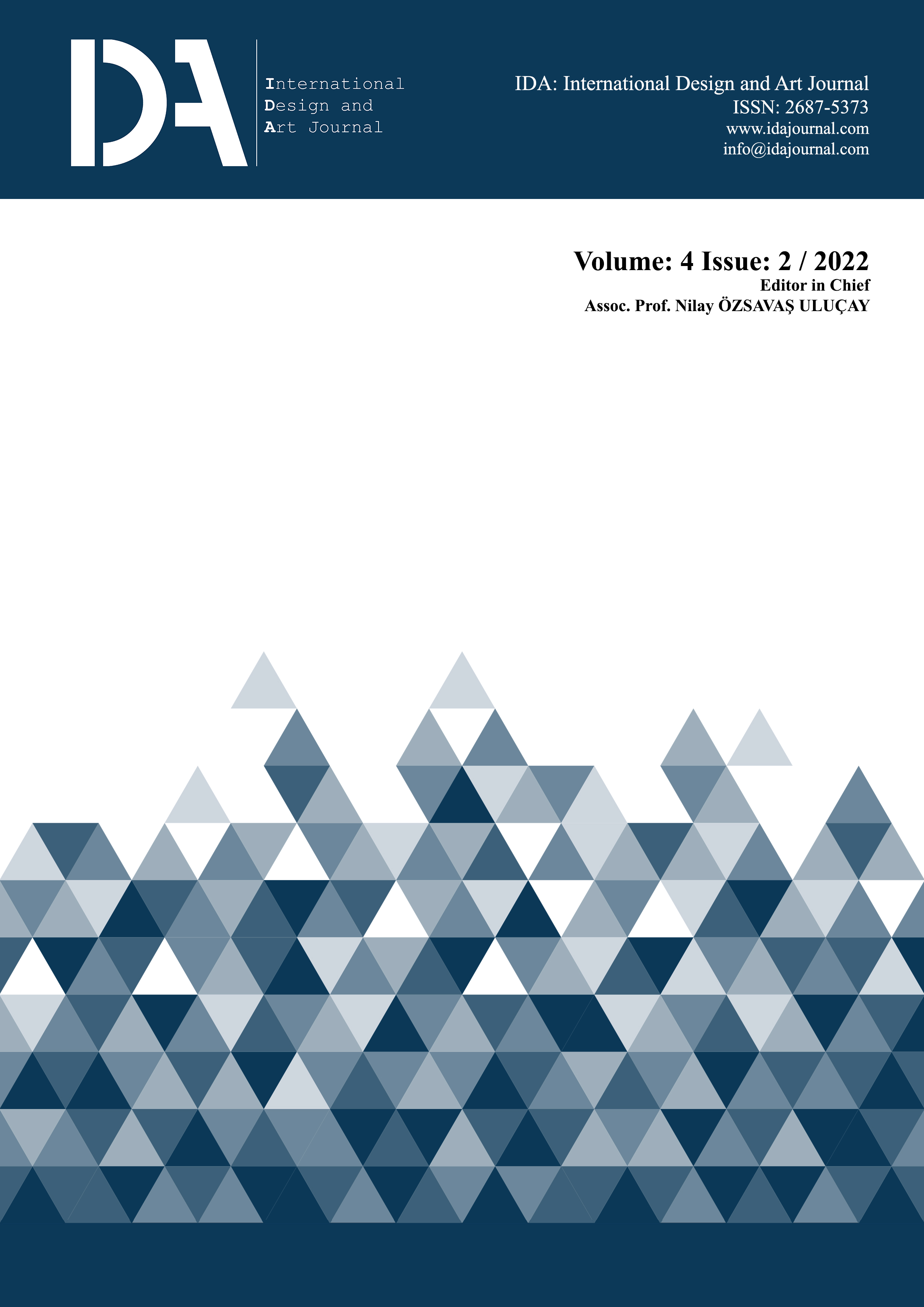Design studio final product evaluation rubric in interior architecture education: Eskişehir Technical University case
Anahtar Kelimeler:
Design Studio- Value and Evaluation- Final Product Evaluation- Measurement and Evaluation in Education- RubricÖzet
This study aims to develop an objective evaluation tool to evaluate final products in interior architecture design studios. Design studios generally apply personal evaluation methods or those predetermined by institutions to evaluate final products. However, such evaluations are often known to be far from being objective. In such evaluations, final product information might lead to a different value judgement that changes from person to person. Thus, a clear, accountable, fair, and objective evaluation tool developed according to this purpose might enable students and course instructors to evaluate themselves. In addition, subjective evaluations can be avoided. This study aims to develop a rubric to ensure an objective and fair evaluation of students’ products. Thus, the evaluation criteria used in this rubric were determined through the analysis of the data obtained from the forms sent to the instructors working in different universities and from the evaluation criteria used by the jury members. Under the light of these data, a new rubric was developed for each design studio group. Different jury members in different juries were asked to use two of these rubrics to provide some feedback about them.
Referanslar
Aktaş, M., Alıcı, D. (2017). Examination of scoring reliability according to generalizability theory in checklist, analytic rubric and rating scales. International Journal of Eurasia Social Sciences, 8(29), 991-1010.
Ayyıldız Potur, A., Barkul, Ö. (2010). Stüdyo: Tasarım eğitiminin kalbi. International Conference on New Horizons in Education, 738-743, Famagusta.
Barrett, M. (1990). Guidelines for evaluation and assessment in art and design education 5-18 years. International Journal of Art and Design Education, 9(3), 299-313.
Botti-Salitsky, R. M. (2005). Evaluation of a virtual design studio for interior design education [Doctoral Thesis, Capella University]. https://www.proquest.com/pagepdf/305358954?accountid=25089
Casakin, H., Kreitler, S. (2008). Correspondences and divergences between teachers and students in the evaluation of design creativity in the design studio. Environment and Planning B: Planning and Design, 35, 666-678.
Crowther, P. (2013). Understanding the signature pedagogy of the design studio and the opportunities for its technological enhancement. Journal of Learning Design, 6(3), 18-28.
Çıkış, Ş., Çil, E. (2009). Problematization of assessment in the architectural design education: First year as a case study. Procedia Social and Behavioral Sciences, 1, 2103-2110.
Erinç, S. M. (2004). Kültür sanat sanat kültür. Ütopya Yayınevi.
Gül, Ö. (2016). Türkiye’de iç mimarlık lisans eğitiminde tasarım stüdyosu derslerinin yürütülmesine yönelik geliştirme modeli önerisi [Doctoral Thesis, Mimar Sinan Fine Arts University].
Güler, N. (2018). Eğitimde ölçme ve değerlendirme. Pegem Akademi Yayıncılık.
Griffin, P. (1991). Literacy assessment: Merging teaching, learning and assessment. Annual meeting of the international reading association. Assessment Research Centre, Las Vegas, 1-13.
Ketizmen, G. (2003). Mimari tasarım stüdyosunda çalışma yöntemleri: Anadolu Üniversitesi mimarlık bölümü örneği. Egemimarlik, 47(3), 32-34.
Kılıç, R. (1996). Olgu ve değer problemi, Ankara Üniversitesi İlahiyat Fakültesi Dergisi, 35, 355-402.
Kuçuradi, İ. (2016). İnsan ve değerler. Türkiye Felsefe Kurumu.
Kurt, S. (2009). An analytic study on the traditional studio environments and the use of the constructivist studio in the architectural design education. Procedia Social and Behavioral Sciences, 1(1), 401-408.
Mamur, N. (2010). Görsel sanatlar egitiminde ölçme ve değerlendirme. Pamukkale Üniversitesi Eğitim Fakültesi Dergisi, 28(2), 175-188.
Oh, Y., Ishizaki, S., Gross, M. D., Do, E. Y.-L. (2013). A theoretical framework of design critiquing in architecture studios. Design Studies, 34, 302-325.
Park, J. Y. (2011). Design education online: learning delivery and evaluation. International Journal of Art and Design Education, 30(2), 176-187.
Popham, W. J. (1997). What’s wrong and what’s right with rubric. Educational Leardership, 55(2), 72-75.
Selik, M. (2016). Marksist değer teorisi. Efil Yayınevi.
Tekindal, S. (2017). Eğitimde ölçme ve değerlendirme. Pegem Akademi.
Shepard, L. A. (2000). The role of assessment in a learning culture. Educational Researcher, 29(7), 4-14.
Smith, K., & Smith, C. (2012). Non‐career teachers in the design studio: economics, pedagogy and teacher development. International Journal of Art and Design Education, 31(1), 90-104.
Turgut, M. F., Baykul, Y. (2015). Eğitimde ölçme ve değerlendirme. Pegem Akademi Yayıncılık.
Uçak, N. Ö. (2010). Bilgi: Çok yüzlü bir kavram. Türk Kütüphaneciliği, 24(4), 705-722.
İndir
Yayınlanmış
Sayı
Bölüm
Lisans
Telif Hakkı (c) 2022 IDA: International Design and Art Journal

Bu çalışma Creative Commons Attribution-NonCommercial-ShareAlike 4.0 International License ile lisanslanmıtır.
IDA: International Design and Art Journal açık erişimli akademik bir dergidir. Kabul edilen makalelerin tüm yayın hakları IDA: International Design and Art Journal'a devredilmiş sayılır. Makaleler başka bir yerde yayınlanamaz, kopyalanamaz ve referans göstermeden kullanılamaz.

IDA: International Design and Art Journal Creative Commons Atıf-GayriTicari-AynıLisanslaPaylaş 4.0 Uluslararası Lisansı ile lisanslanmıştır.


